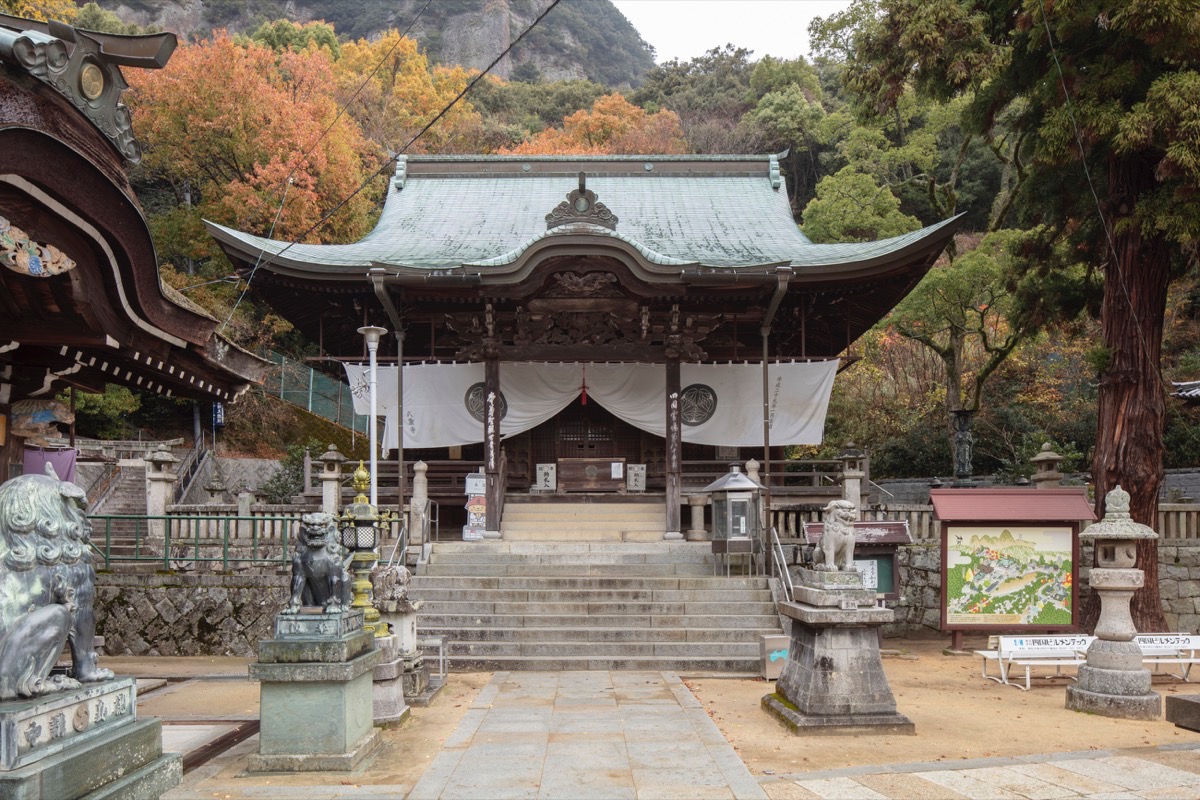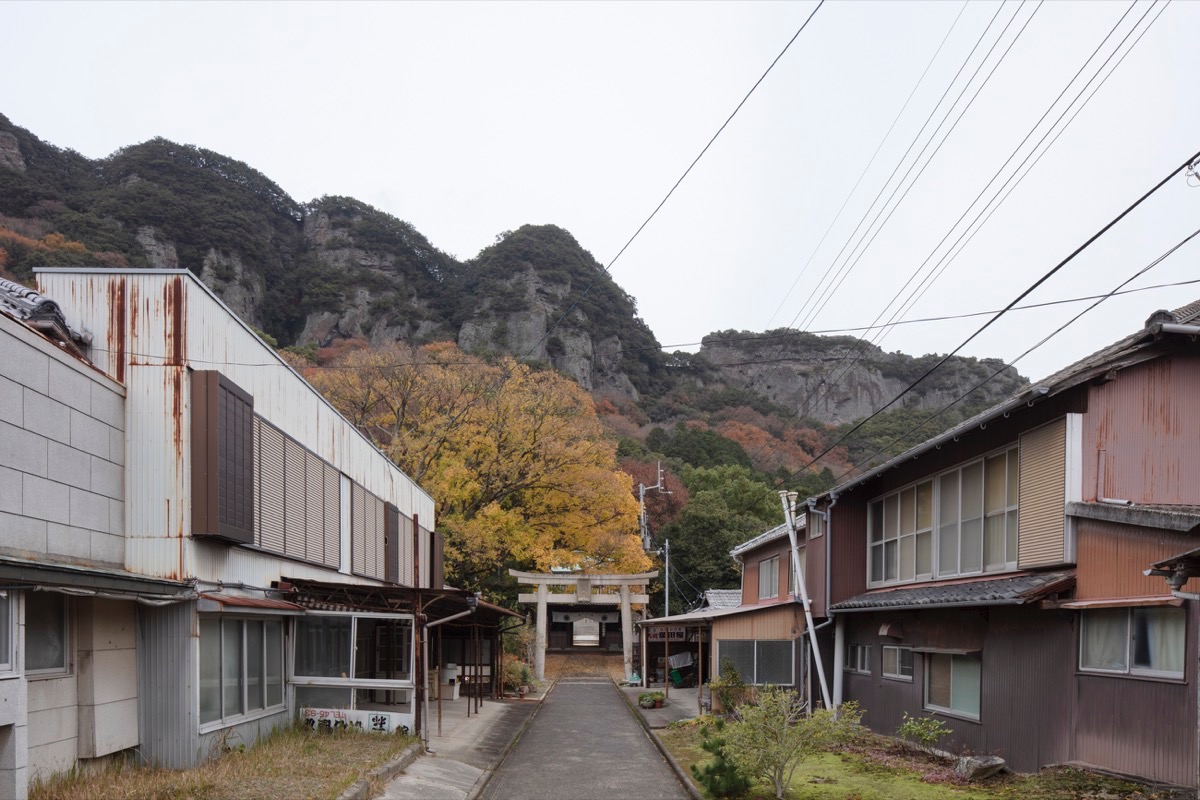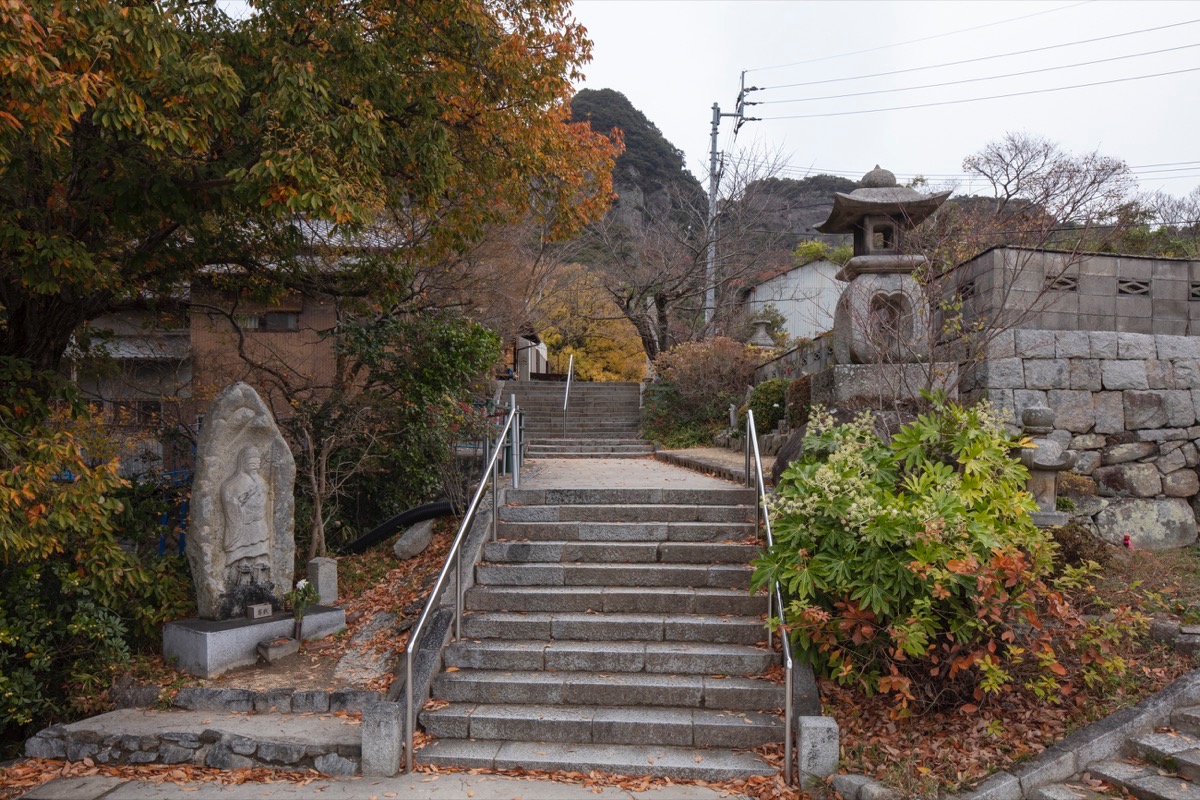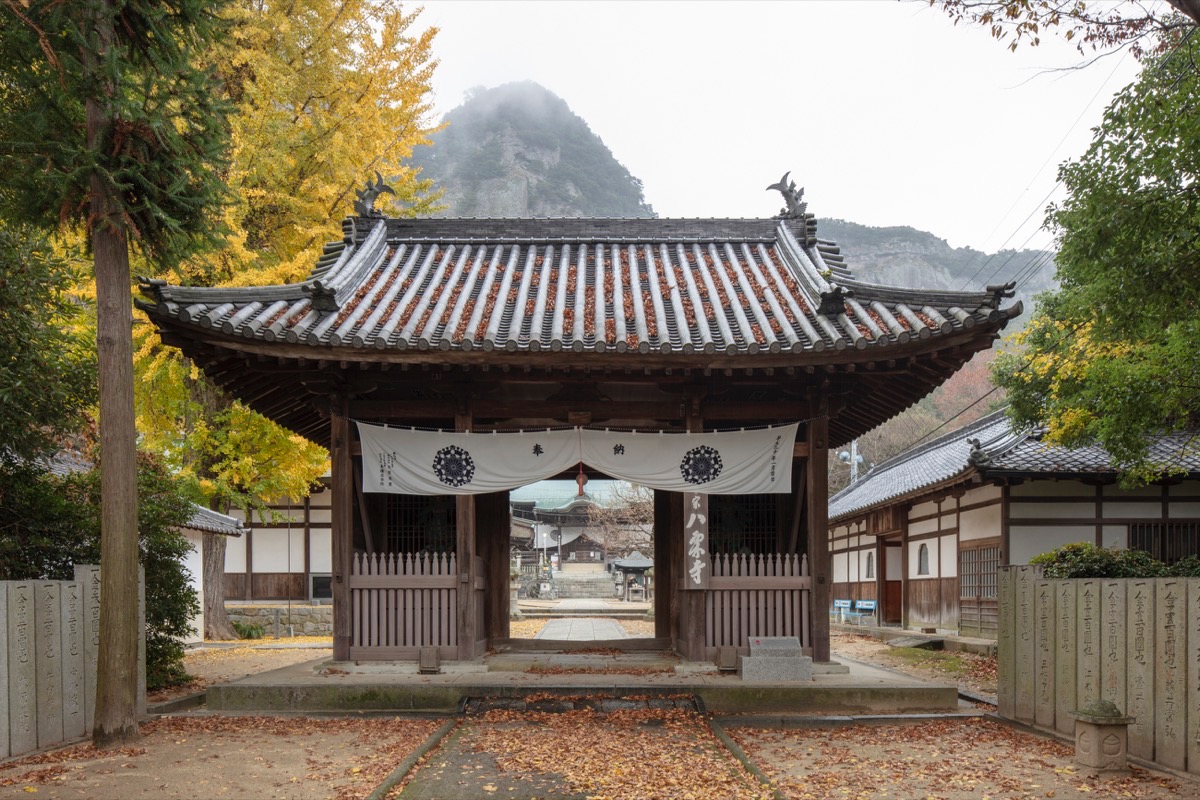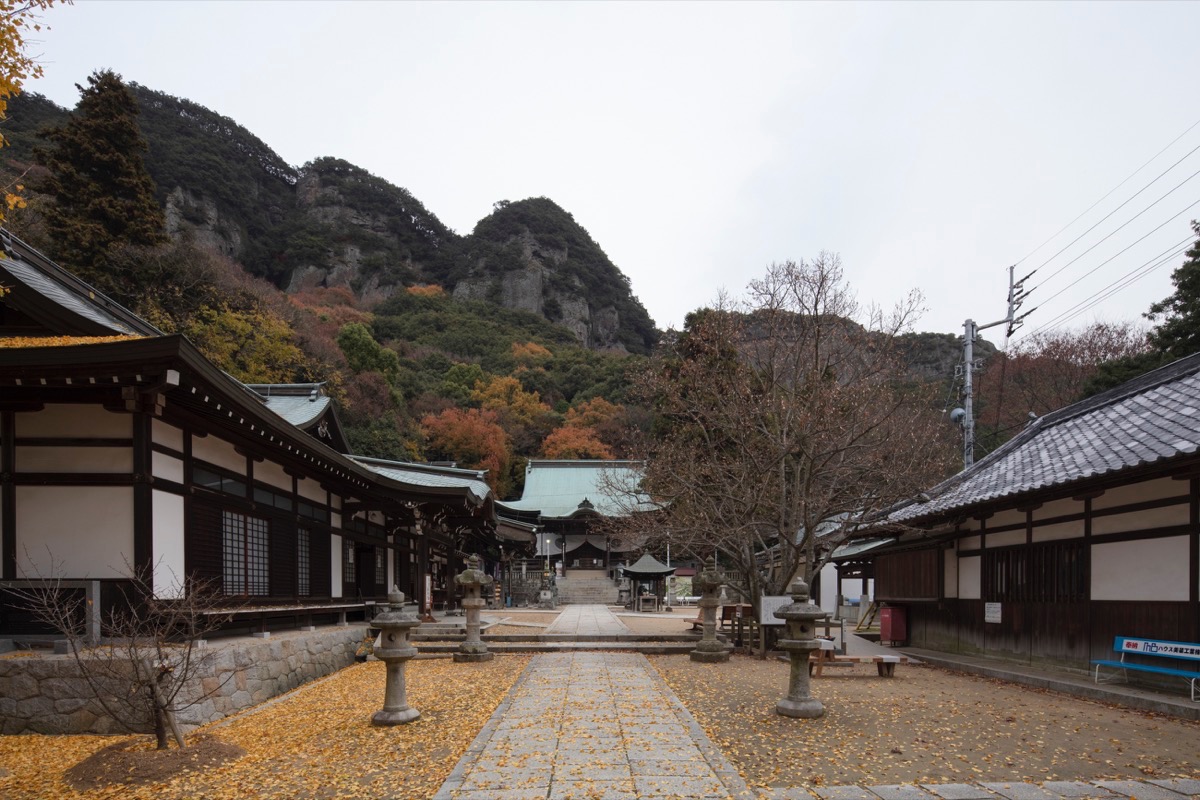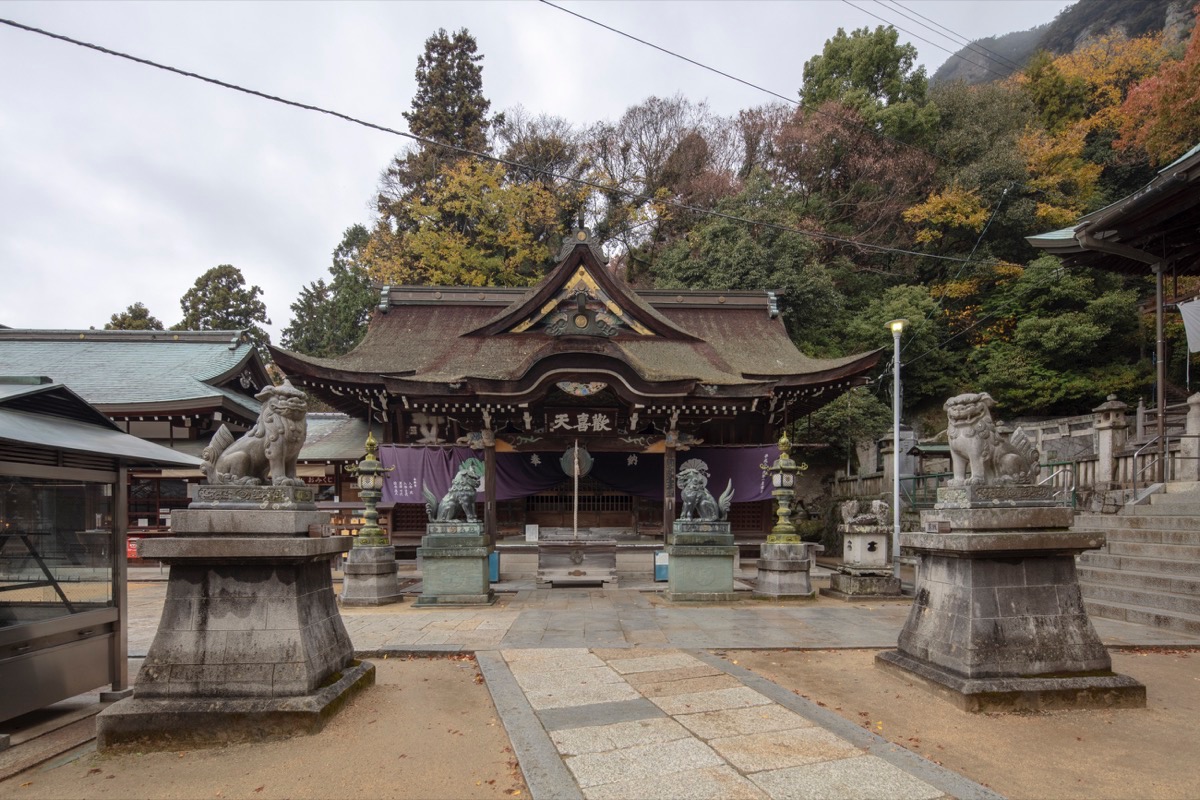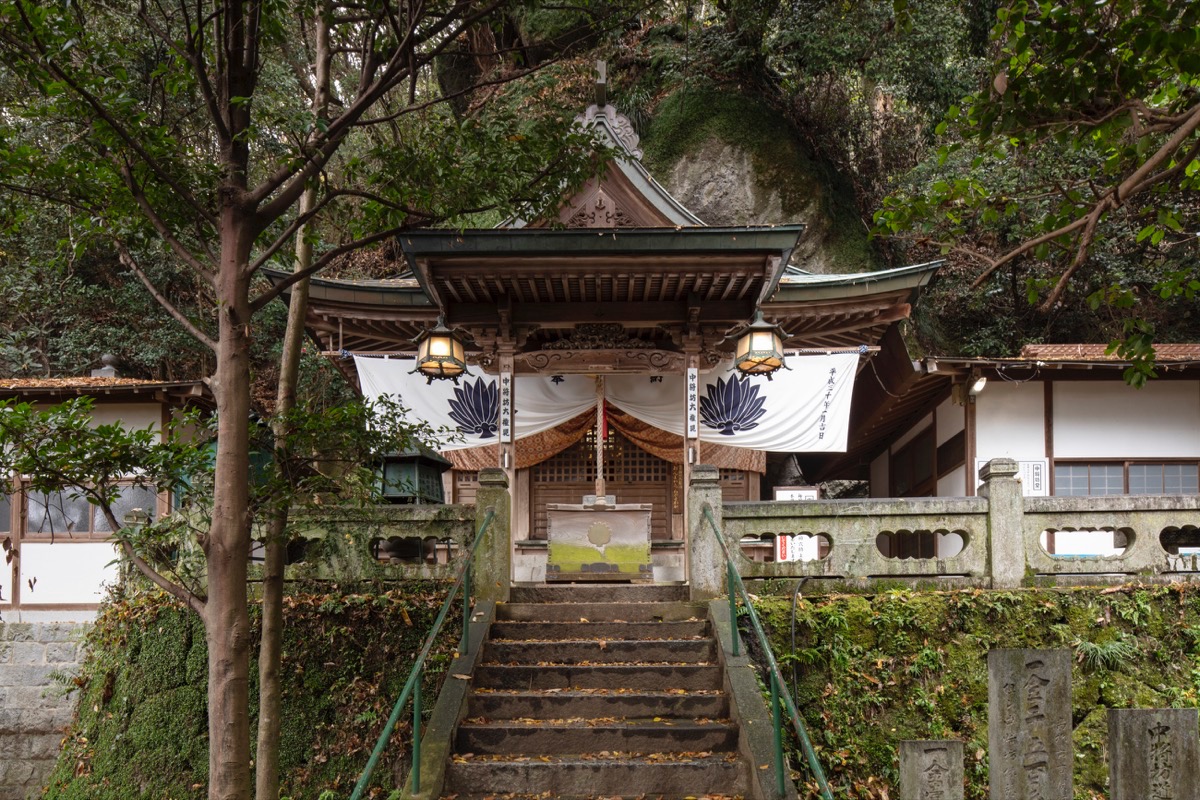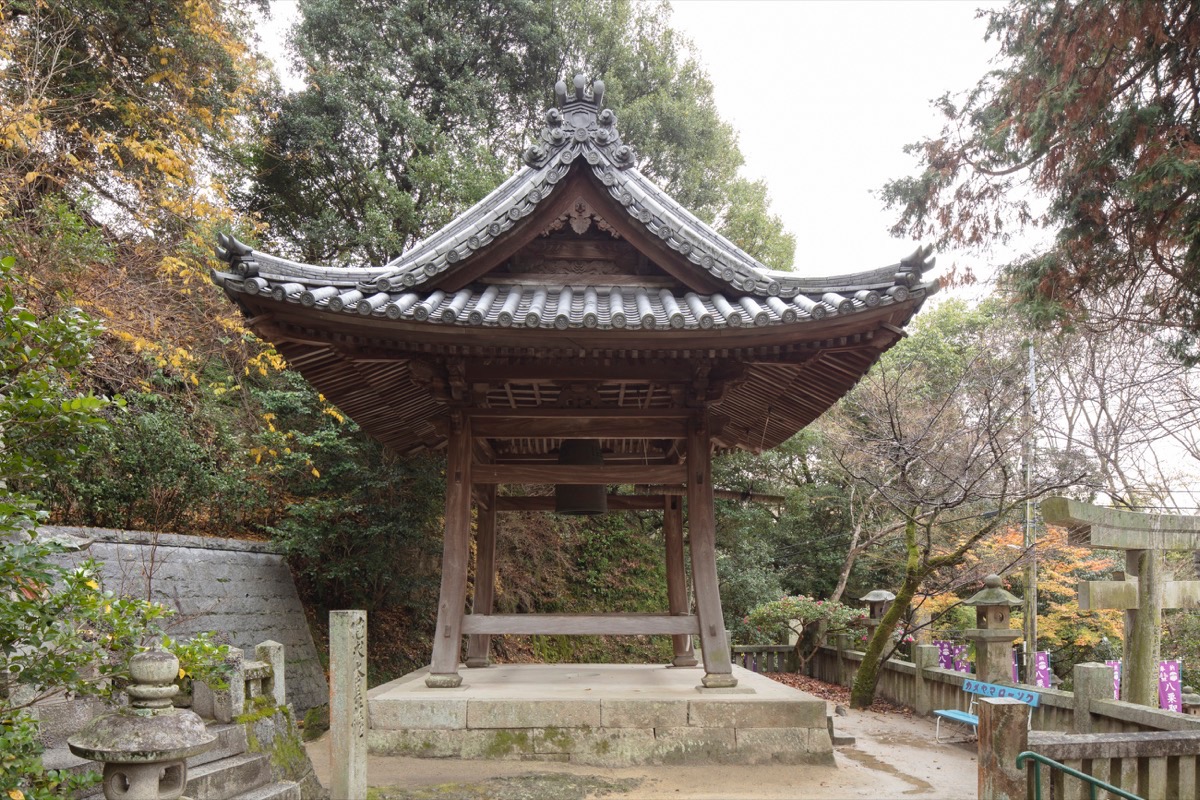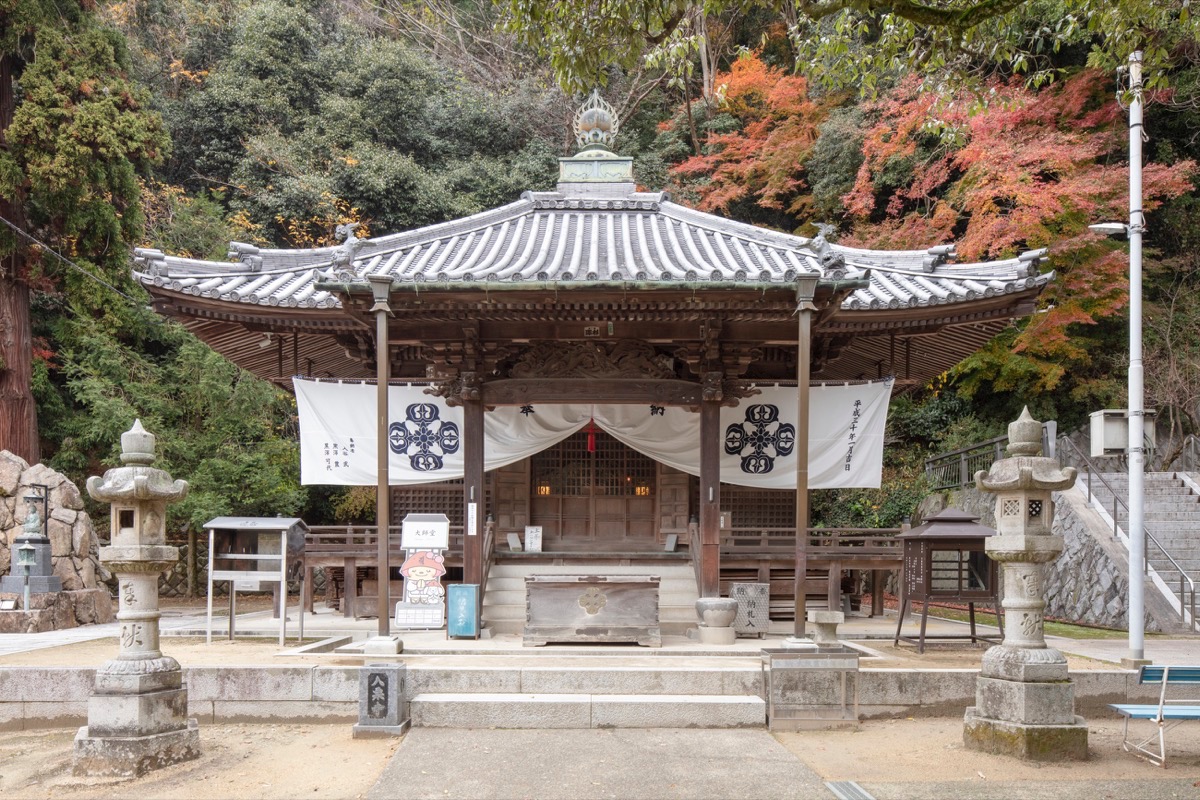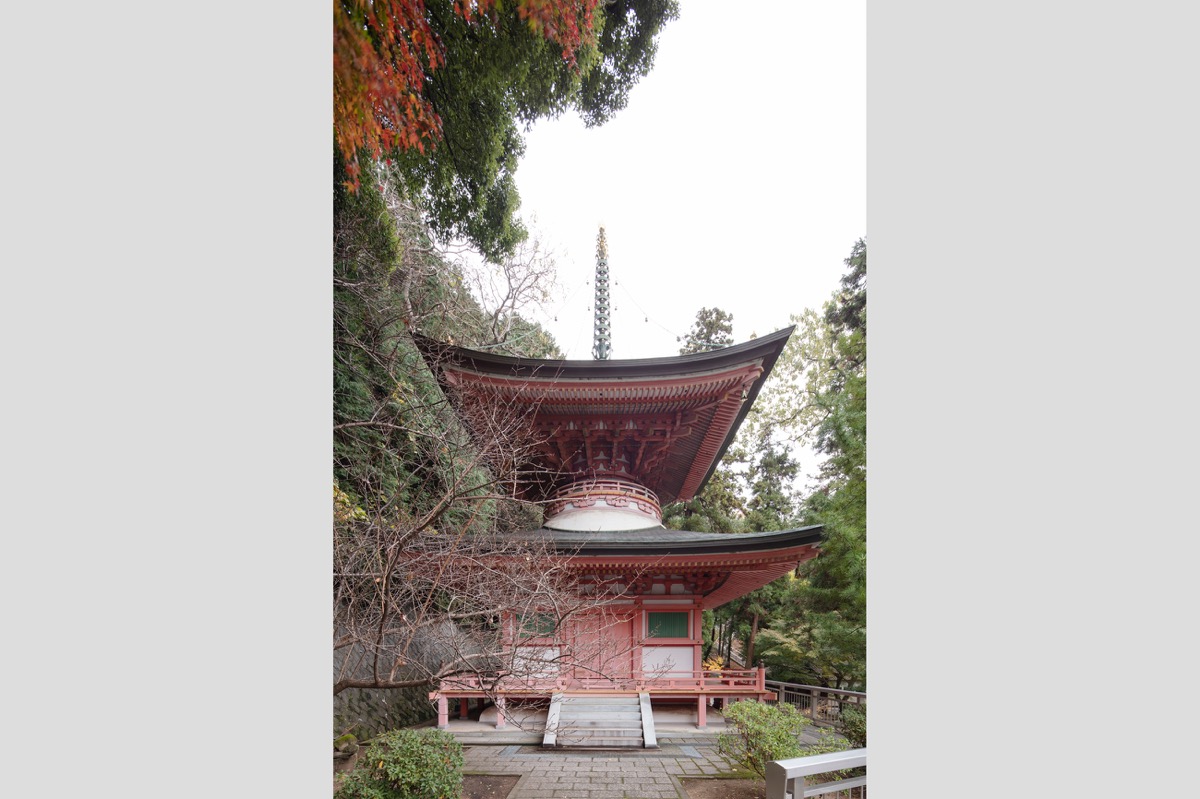Yakuriji TempleThe 85th Temple Yakuriji Temple
| District | Shikoku Henro pilgrimage | Period | ー |
|---|---|---|---|
| Set Content/Set Date | |||
| Owner | Yakuriji Temple | Location | 3416 Mure, Murecho, Takamatsu, Kagawa |
Yakuriji Temple, the 85th sacred spot on the Shikoku Henro pilgrimage, is close to the top of Mt. Goken, which has an altitude of 375 meters, and it consists of five enormous peaks protruding from the earth like swords. Mt. Goken once had five peaks, but the eastern peak collapsed during the great earthquake of 1706 (Hoei 3), creating its current form.
This temple got its start in 829 (Tencho 6), when Kobo Daishi came to these mountains to practice Gumonjiho, an ascetic practice said to give one an excellent memory. At this time, five swords fell from the heavens and the mountain deity Zao Gongen appeared with the revelation that “this mountain will be a sacred place of Buddhism.” Kukai then buried the swords for safekeeping, and carved an image of Dainichi Nyorai and named these mountains Mt. Gozen (Five Swords).
The temple at the time was called Yakunidera (Eight Lands Temple), because one could see eight different provinces in all directions from the summit, but when Kobo Daishi once again climbed these mountains before setting off to study in Tang China, he planted eight roasted chestnuts to foretell the success of his journey, which began budding when he returned to Japan, and as a result renamed the temple to Yakuriji (Eight Chestnuts Temple).
Mt. Gozen has been a center of religious training since antiquity, and even today there is Chujobo Hall, which enshrines Chujobo, one of Sanuki’s top three tengu (long nosed goblins).

